Valuing Investment Report: Optimal Portfolio and Risk-Free Asset
VerifiedAdded on 2020/04/07
|5
|717
|49
Report
AI Summary
This report focuses on valuing investments, specifically exploring the concepts of optimal portfolios and risk-free assets. It explains the fundamental principles of optimal portfolios as a combination of investments designed to minimize overall risk and generate consistent returns. The report highlights how optimal portfolios evaluate stock correlations to determine appropriate investment weights and reduce investment risk, referencing key literature. It also discusses the role of risk-free assets in enhancing portfolio returns while mitigating risk, emphasizing that these assets are unaffected by volatile capital markets and can improve the Sharpe ratio. The analysis of a sample portfolio demonstrates how the inclusion of a risk-free asset can increase returns and reduce standard deviation, thereby strengthening the portfolio's overall performance. The report concludes by emphasizing the importance of optimal portfolios and risk-free assets in identifying appropriate asset weights to reduce investment risk and generate higher returns.
1 out of 5
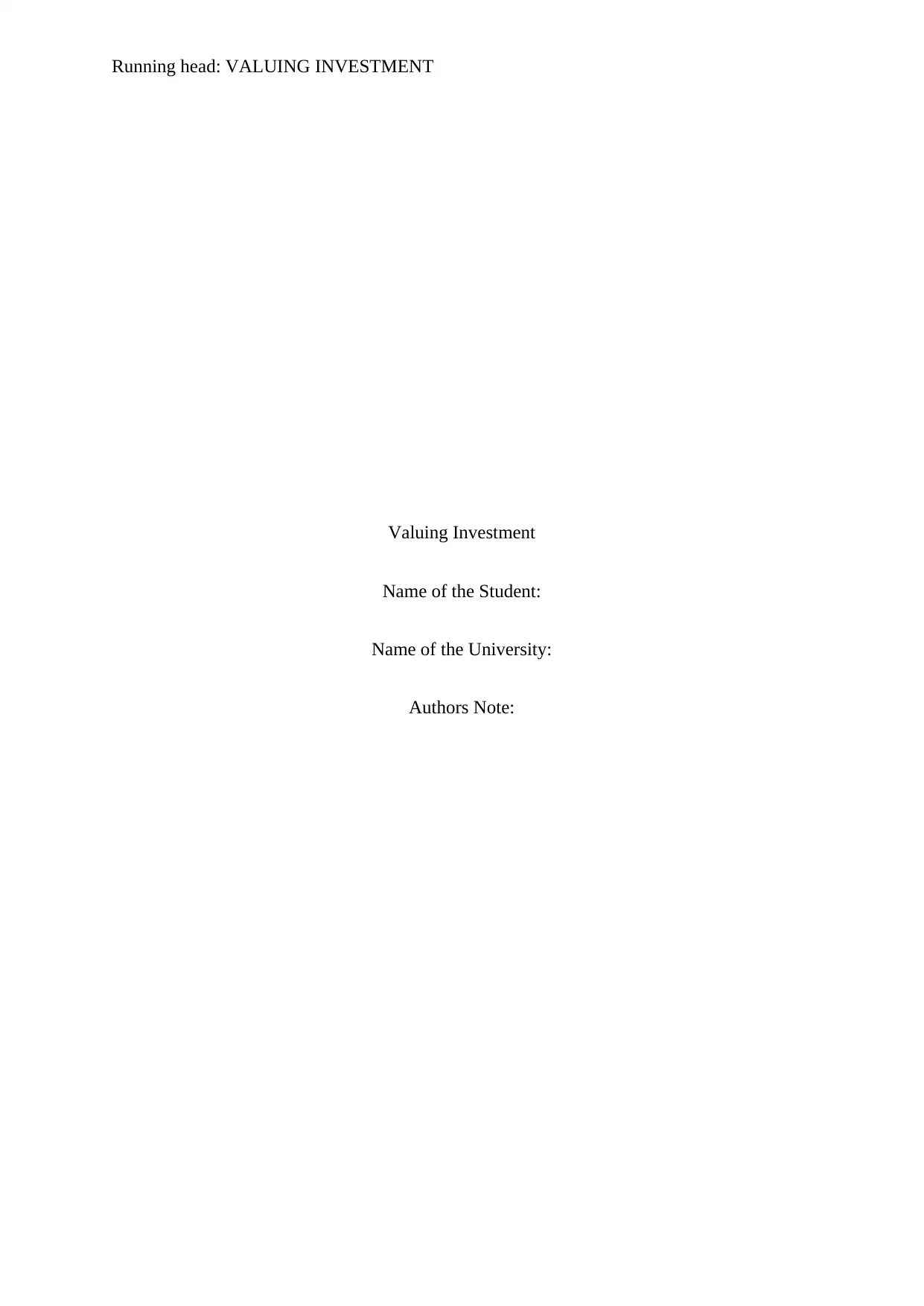
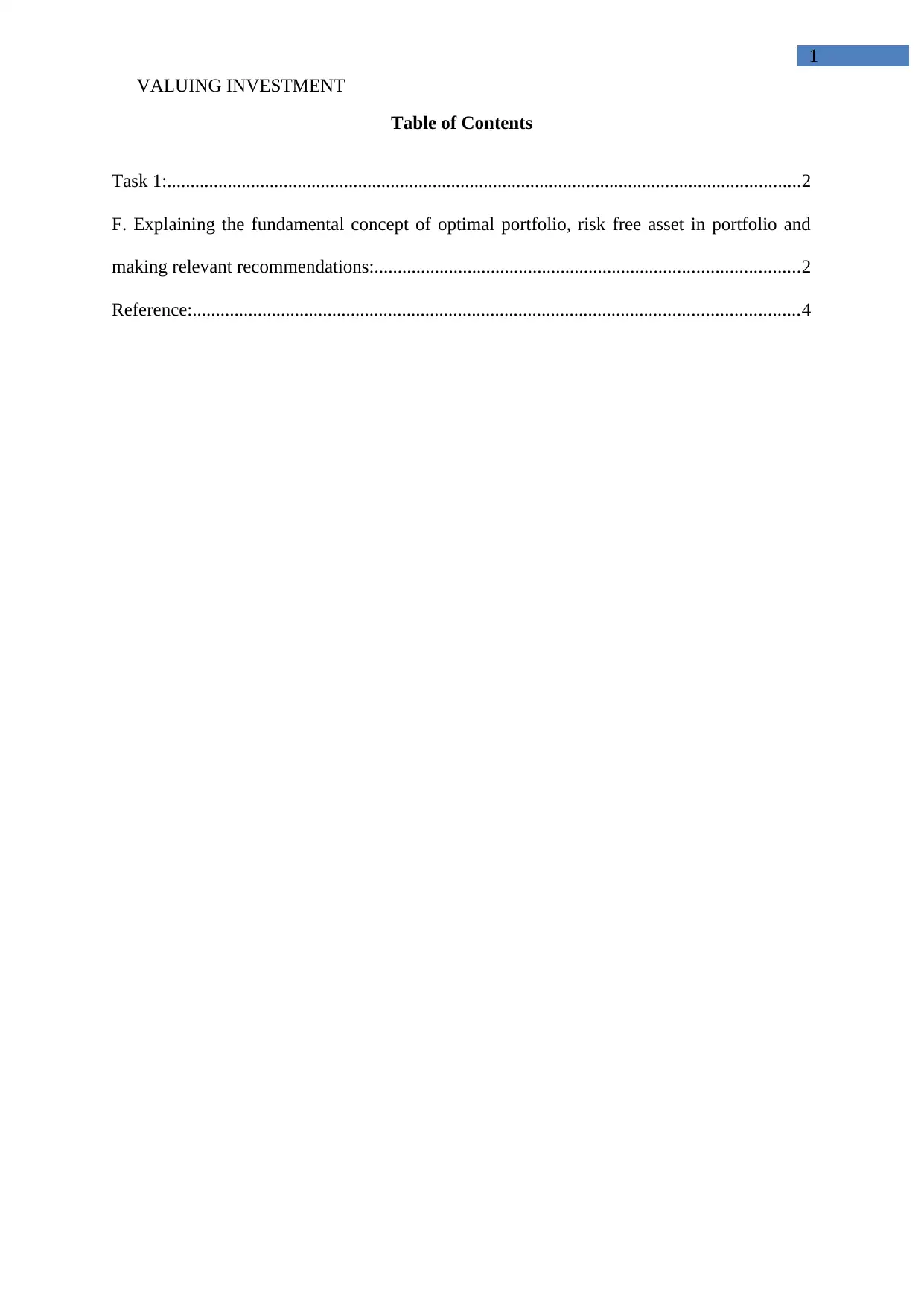
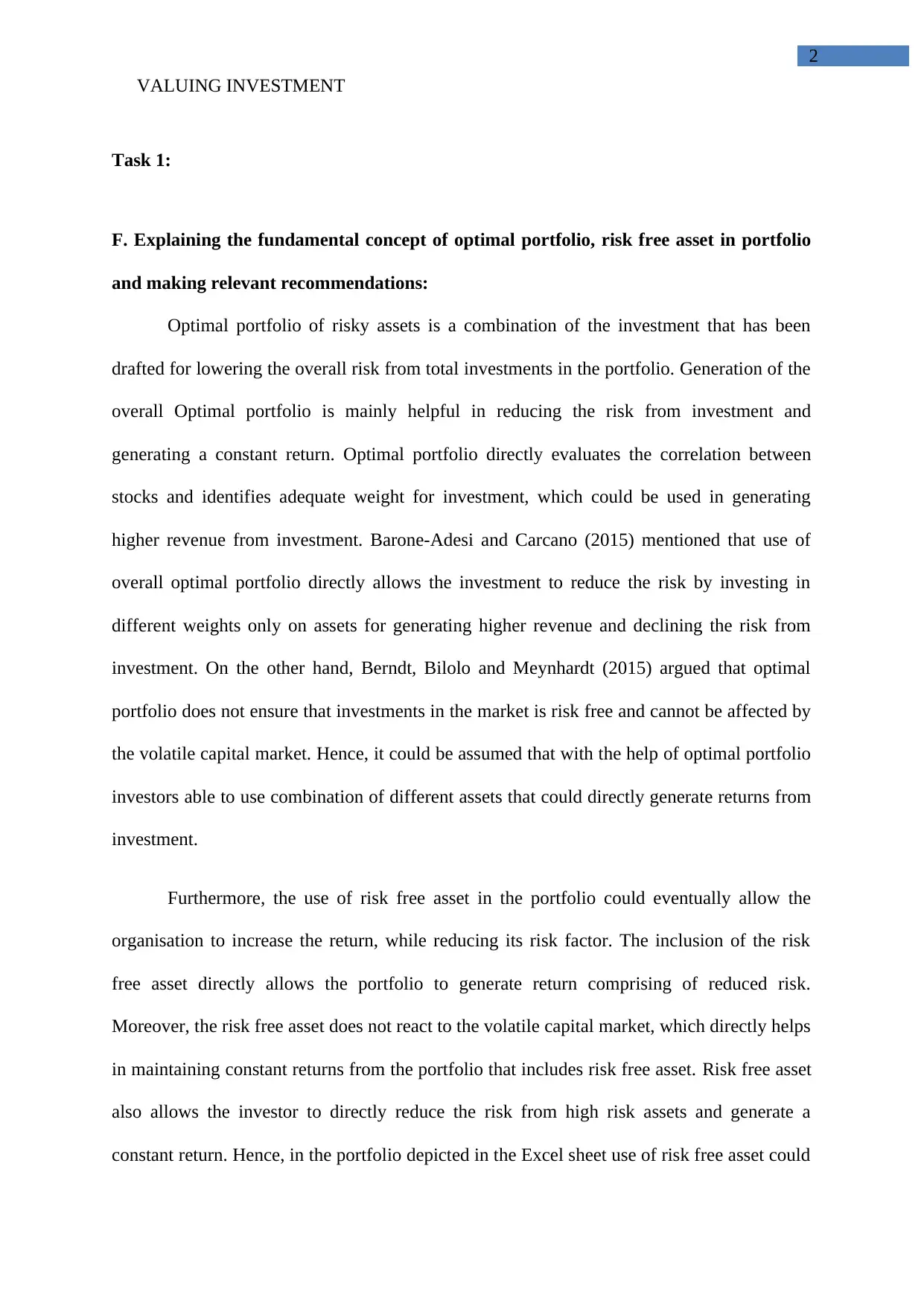

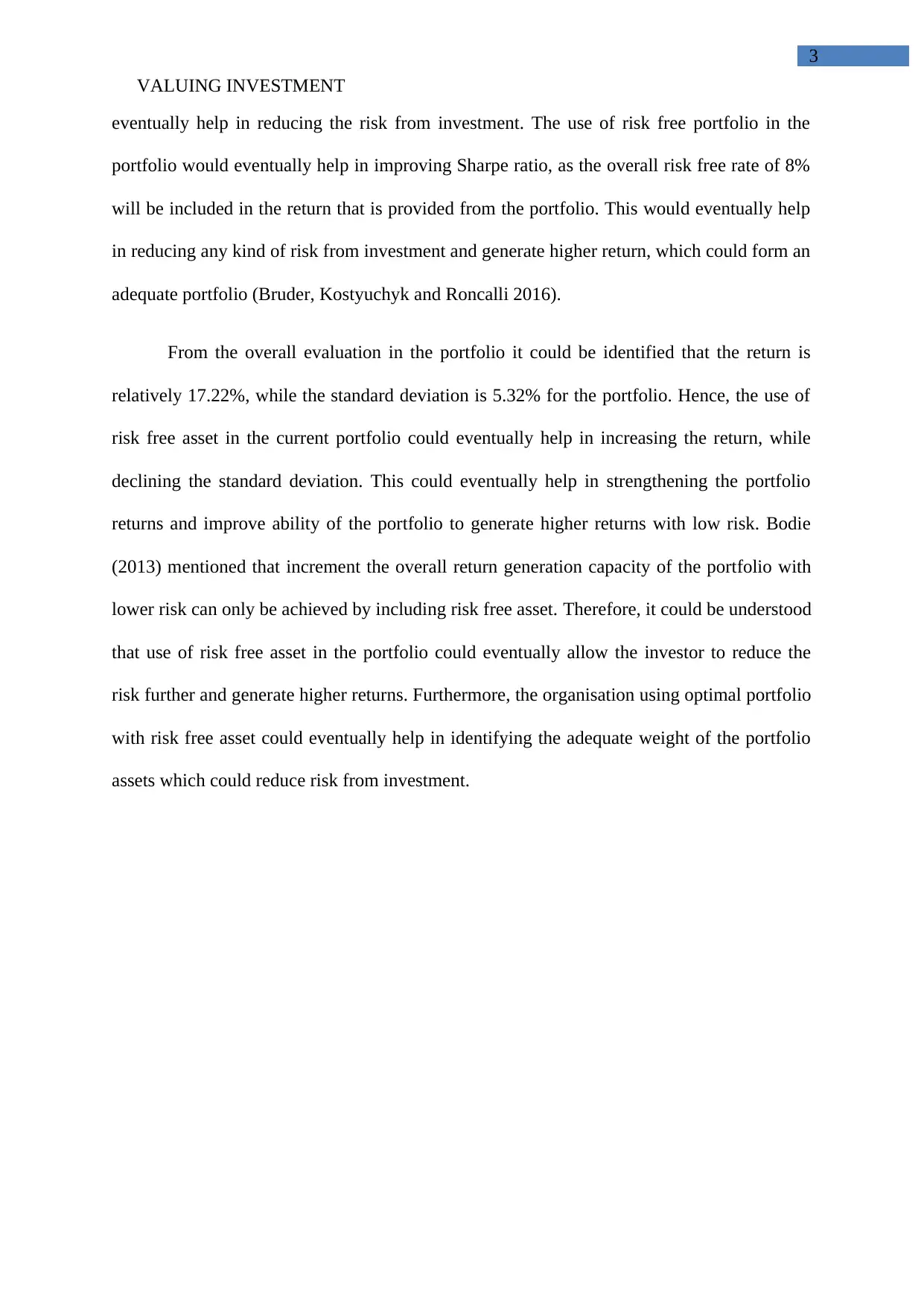
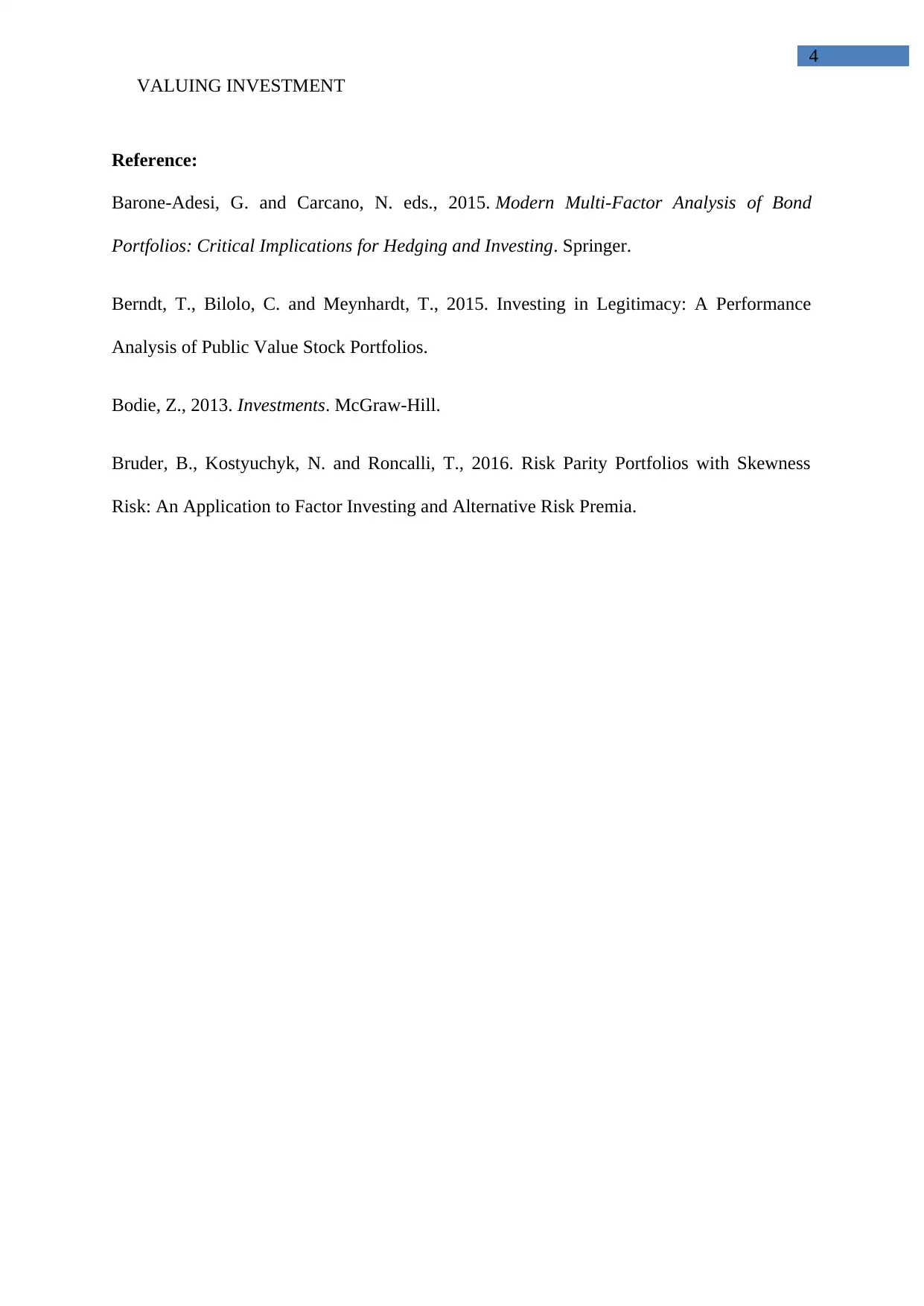






![[object Object]](/_next/static/media/star-bottom.7253800d.svg)